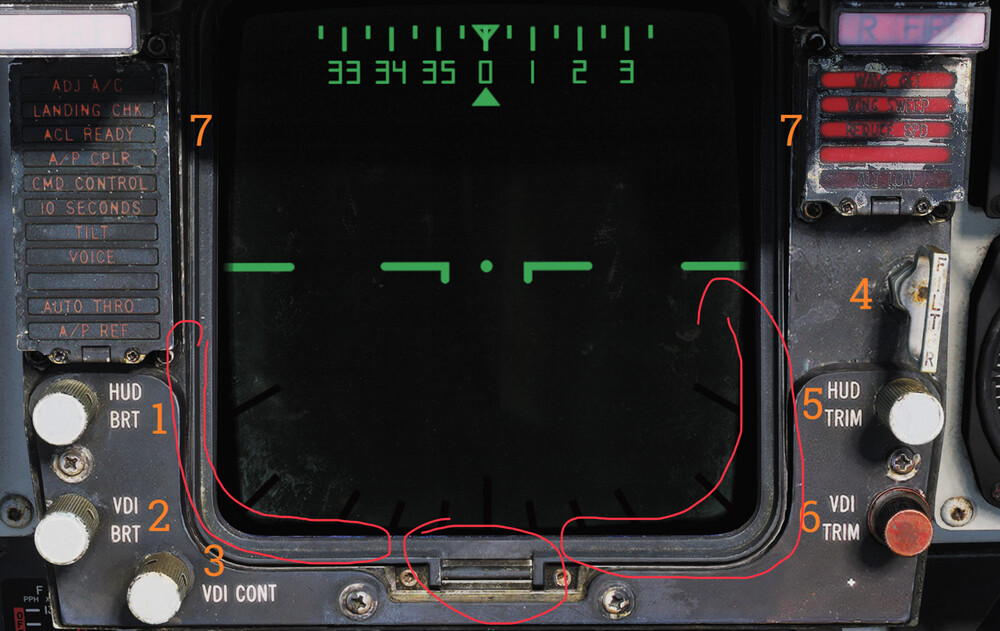-
Posts
519 -
Joined
-
Last visited
-
Standard instrument flying… pitch for airspeed (AOA), power for altitude (vertical speed). Use pitch and trim to achieve and maintain on-speed AOA and use power for vertical speed and altitude. Pitch input can’t possibly be taboo since you can’t maintain AOA without it. If you’re properly trimmed on-speed in the downwind, it will naturally be minimal.
-
You need to read up on some basic flying principles, as this is just flat wrong. If you are on speed at 150 knots indicated airspeed (KIAS) based on your weight, then you are on speed at 150 KIAS. Period. You can have a 100 knot headwind, a 100 knot tailwind, and anything in between. Doesn’t matter. You will be on speed at 150 KIAS. Your ground speed will be 50 knots with a 100 knot headwind and 250 knots with a 100 knot tailwind, but you will be indicating 150 KIAS and will be on speed. Period. Are you looking at the HSD and thinking your ground speed is your airspeed? P.S. for flying an approach, your airspeed may be interesting, but that’s all it is. It plays no part in flying an approach. As an exercise, and to break what looks like may be a bad habit or misperception you’ve latched onto, mentally “cover” the airspeed indicator and ignore it. Get on speed and fly the approach without even knowing what your airspeed is, because it doesn’t matter. Use pitch/trim to maintain AOA and throttle to maintain vertical speed. AOA and vertical speed are the only things you care about.
-
Maintenance didn’t like taking the tanks off for the sole reason that it sucked. You needed four guys on either side and one guy working the standpipes and the latch and you reached under and locked arms and grunted, groaned and cursed while the guy tried for five minutes to get the god damn standpipes to line up.
-
It actually snapped in. It sat in that recess you can see along the perimeter of the screen, and had a clip that snapped onto that horizontal bar at the bottom.
-

Throttle TEMP (Computer Gain) Switch Hot / Normal / Cold
Spiceman replied to ASW's topic in DCS: F-14A & B
Applies a gain adjustment to the auto throttle computer. It takes more throttle to produce the same amount of thrust on hot days, less throttle for the same thrust on cold days. -
It’s not overdone and it’s absolutely perfect. You may not like, or believe, that F-14 cockpits looked that way, but they absolutely did and it would be a disservice to change it.
-
That’s certainly possible. Too bad the shore squadrons didn’t create yearbooks the way that the boats made cruise books. Memories fade. I spent the first half of my time in VF-101 in Troubleshooters and the second half in QA.
-
No, thank you guys for the obvious love and respect you have for the Tomcat that you take the time to model it as it truly was. Safety wired loose pushbuttons and all.
-
Mike Force Team started following Spiceman
-
PAR approaches were the other type of instrument approach commonly used.
-

Why can't Jester align the INS before the engines are on?
Spiceman replied to Leviathan667's topic in DCS: F-14A & B
Setting the Alert 5 was done by performing a normal aircraft startup (has to be a full ready-7 alignment), taxiing to the catapult, and then performing a normal shutdown. Now you’ve got a valid potential SHA. The airplane cannot be moved and the boat must remain on that heading, or you can no longer perform a SHA on startup. On an Alert 5 launch, you started the engines, turned up the AWG-9, ran the alignment (you can start the alignment even before the AWG-9 finished booting up) and launched. No tests in the front seat, no OBC, no nothing. Start the engines, get the alignment, and go. -

Why can't Jester align the INS before the engines are on?
Spiceman replied to Leviathan667's topic in DCS: F-14A & B
IRL you had to wait until the pilot did the emergency generator test after engine start before turning up the back seat. The test interrupts power on the main AC bus and the interruption risks damaging some of the more sensitive stuff. -
It’s a gain circuit in the auto throttle computer. Engines produce less power on hot days and more power on cold days. It’s not about more or less power per se, it’s about the appropriate throttle control adjusted for temperature.
-
Are you putting the wings in Auto? If you look at the wingsweep indicator, does it show you’re in Auto, or is it coming out of Auto unexpectedly, perhaps?







